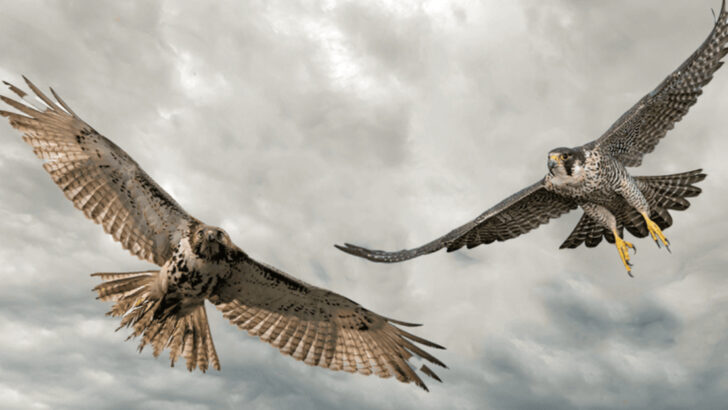Not all birds of prey are created equal. Hawks and falcons may both rule the skies, but these fierce hunters have some surprising differences that set them apart.
One is built for power, the other for speed. One prefers a soaring hunt, while the other dives like a missile. Even their wings, beaks, and hunting styles tell the story of two predators with distinct skills. Yet, they often get mixed up—mistaken for the same bird by casual observers.
If you’ve ever wondered which bird is watching from above or streaking past in a blur, it’s time to clear up the confusion. These 12 key differences will help you tell a hawk from a falcon in an instant.
Wing Shape and Flight Style
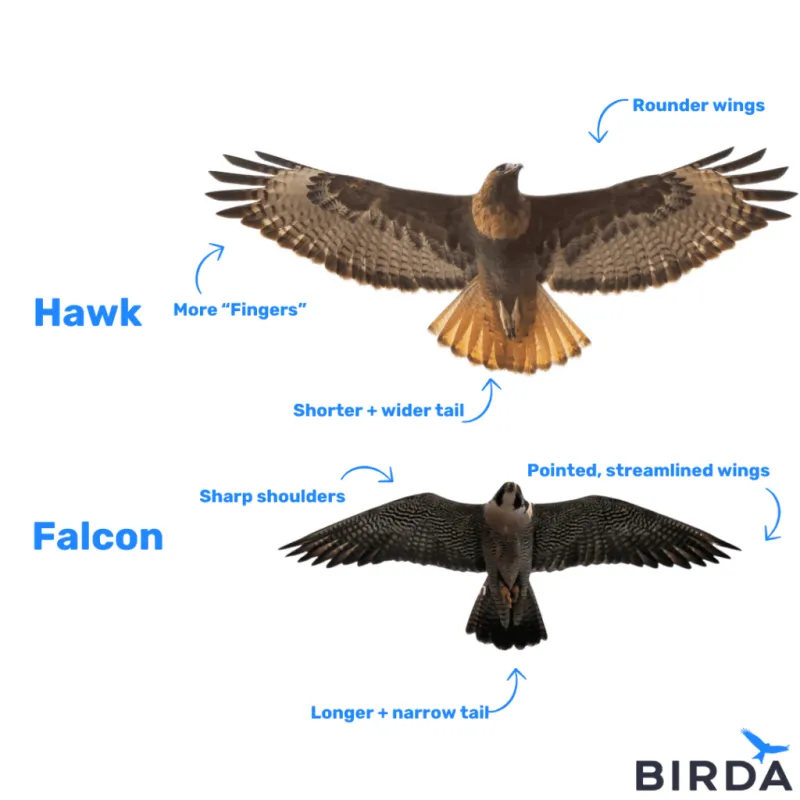
Hawks are known for their broad, rounded wings which allow them to soar gracefully over long distances. This wing shape supports their habit of gliding and maneuvering through wooded areas with ease. In contrast, falcons possess long, narrow wings designed for speed and agility. These wings enable falcons to dive at incredible speeds when pursuing prey. Such adaptations highlight their preference for open spaces where they can fully utilize their rapid flight capabilities. Understanding these differences in wing shape not only reveals their hunting preferences but also their evolutionary adaptations to their respective environments.
Beak Structure
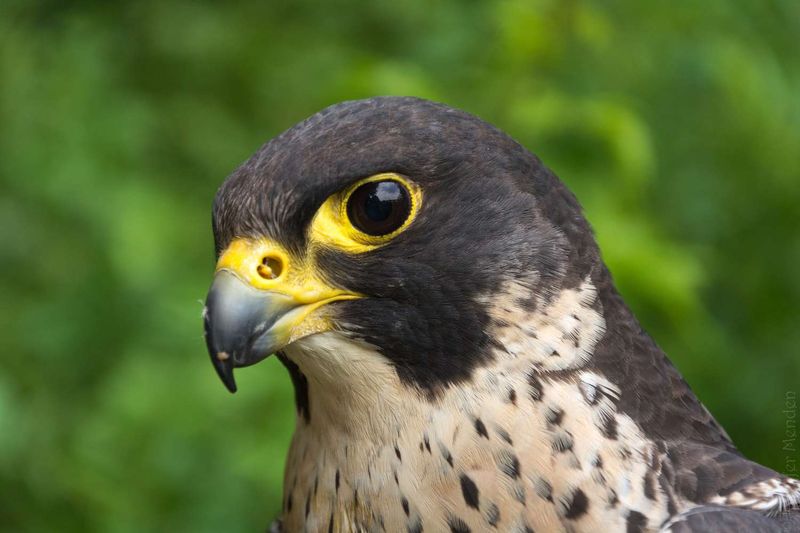
The beak of a hawk is typically more curved than that of a falcon, built for tearing flesh from their prey. This adaptation suits their predatory lifestyle in dense forests where they often hunt mammals. Falcons, however, showcase a unique adaptation known as a “tooth” or notch on their beak. This structural feature helps them deliver quick, precise killing blows to their prey, often in mid-air. Such differences in beak design emphasize their diverse hunting strategies and the types of prey they target, painting a vivid picture of their ecological niches.
Hunting Techniques
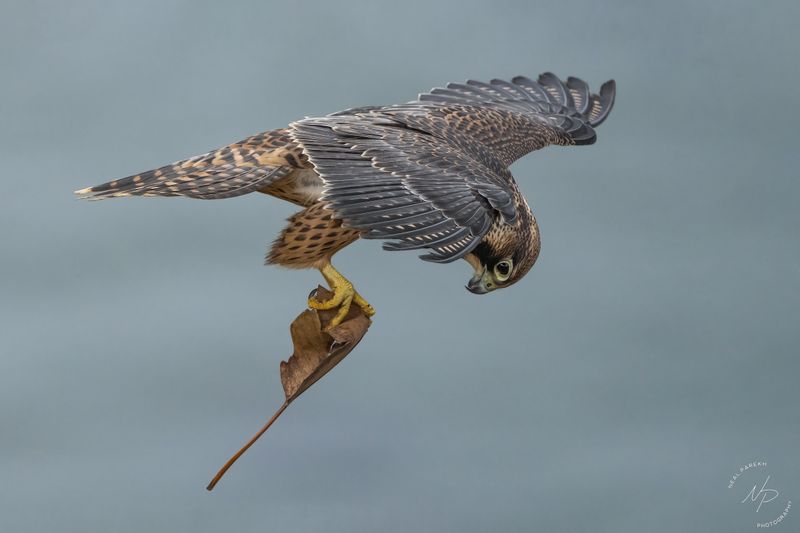
Hawks often employ a sit-and-wait approach, perching high and waiting to ambush unsuspecting prey. This method is energy-efficient and effective in wooded areas. Falcons, meanwhile, are renowned for their active pursuit of prey in mid-flight. They are capable of reaching astonishing speeds, making them formidable aerial predators. These contrasting hunting techniques not only demonstrate their adaptability but also highlight their role in the ecosystem as both are effective hunters of different prey types. Such differences illustrate their evolutionary paths and ecological roles across various environments.
Size and Build
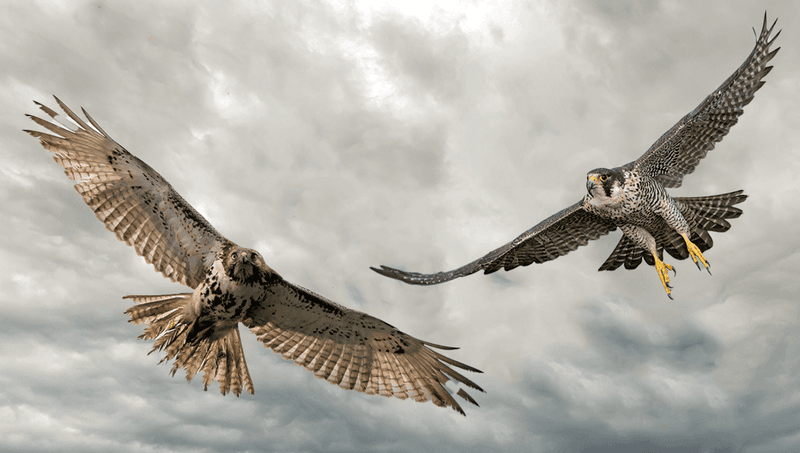
In general, hawks tend to be larger and bulkier than falcons. This size difference results from their different lifestyles and hunting needs. Hawks rely on their strength to overpower prey, often in ambush situations. Falcons, on the other hand, are more streamlined, built for speed and agility to capture prey in flight. These physical differences are a testament to their specialized roles in nature and their evolutionary divergence. Understanding their size and build provides insight into how these birds fit within their respective ecosystems, balancing power with precision.
Vision and Hunting Adaptations
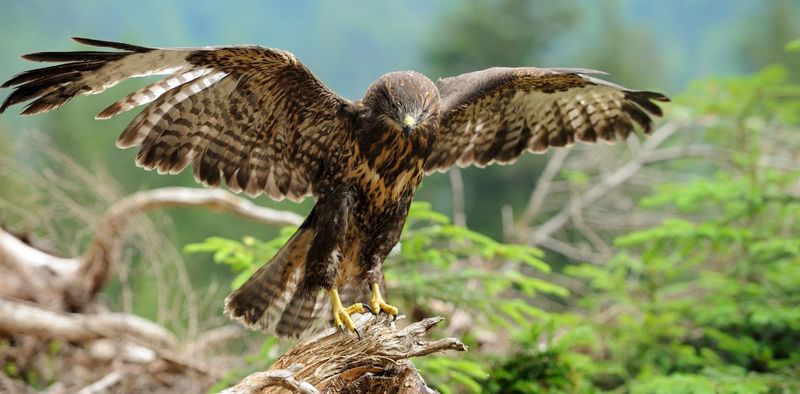
Both hawks and falcons have exceptional vision, crucial for their hunting success. However, hawks are known for their incredible depth perception, aiding them in spotting prey from great distances. Falcons, meanwhile, have superior focus and eyesight that allows them to lock onto fast-moving prey during high-speed chases. These visual adaptations are critical to their hunting prowess and demonstrate their specialization in different hunting environments. Such keen eyesight is a defining feature, underscoring their status as top predators in the avian world.
Habitat Preferences
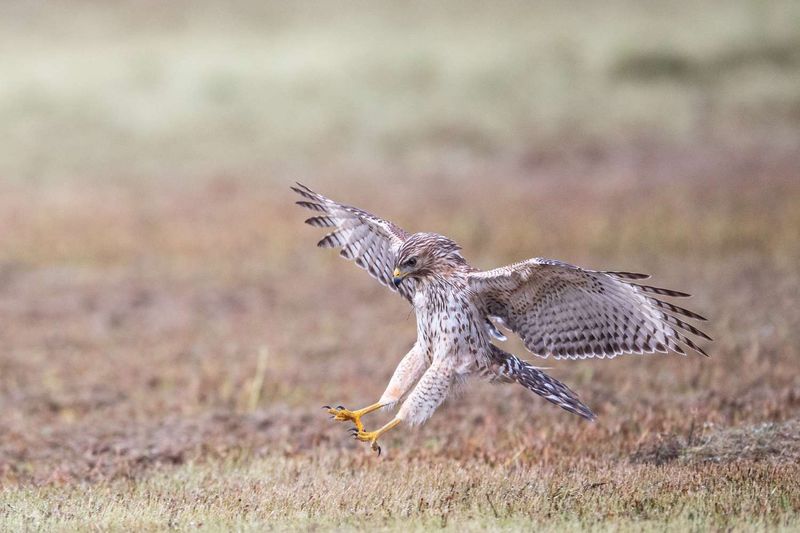
Hawks are commonly found in a variety of habitats, including forests and mountainous regions, where their broad wings allow for agile navigation. Falcons, in contrast, prefer open areas such as grasslands and deserts, where their speed is unhindered by obstacles. These habitat preferences reflect their evolutionary adaptations and hunting strategies. By inhabiting different environments, they minimize competition with each other while maximizing their hunting success. Such distinctions in habitat selection highlight their ecological diversity and specialization, further differentiating these birds of prey.
Nesting Habits
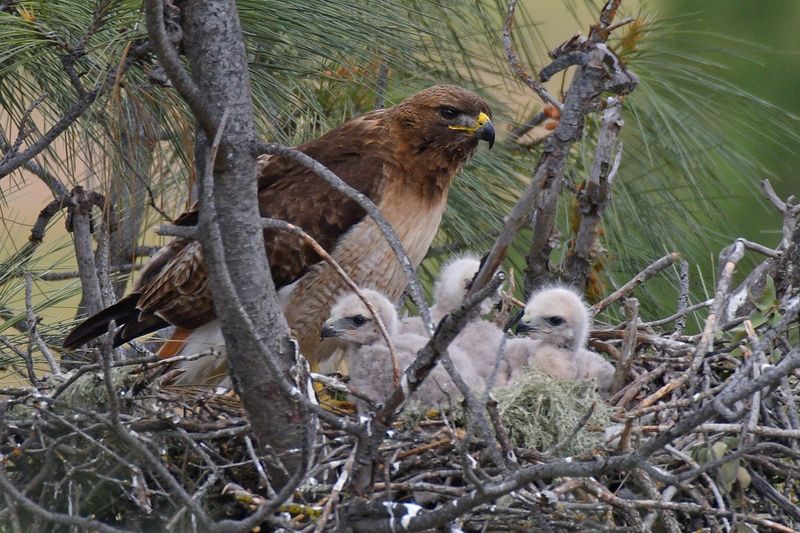
Hawks typically build large nests in trees, utilizing sticks and other materials to create a sturdy home for their young. These nests are often reused and expanded over the years. Falcons, however, prefer more secluded nesting sites such as cliff ledges or tall buildings in urban areas. They tend to use existing structures rather than building their own nests. These nesting habits reflect their environmental adaptations and reliance on different nesting strategies to protect their offspring. Such behaviors emphasize their survival techniques and adaptability in diverse settings.
Feather Patterns and Colors
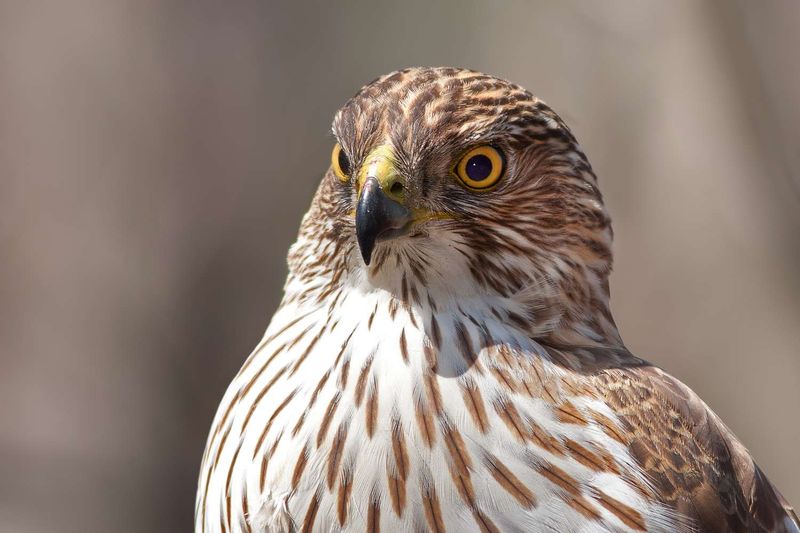
The plumage of hawks often exhibits varied patterns and colors, providing camouflage in their densely vegetated habitats. These patterns help them remain unnoticed by prey and predators alike. Falcons, on the other hand, generally display sleek and uniform plumage, aiding in aerodynamic efficiency during high-speed pursuits. These differences in feather patterns and colors are adaptations to their respective environments and hunting methods. The diversity in plumage not only serves practical purposes but also adds to the aesthetic appeal of these magnificent birds.
Dietary Preferences
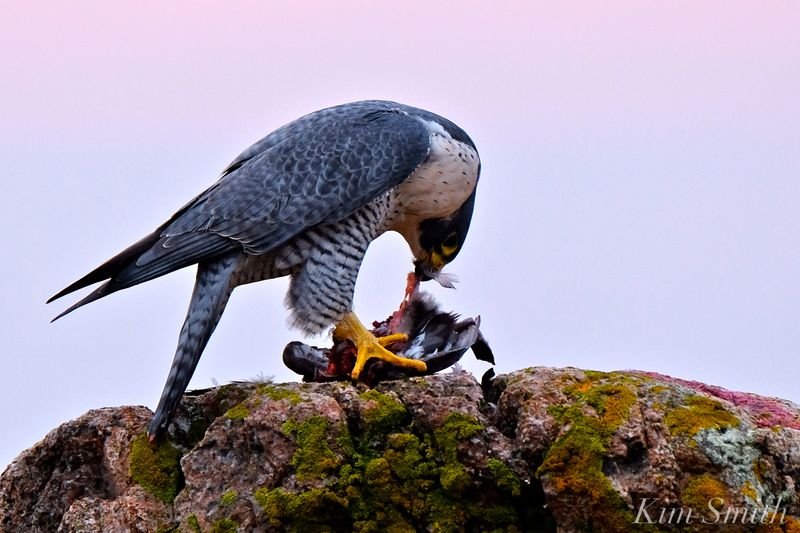
Hawks generally have a diet that includes small mammals, reptiles, and insects, reflecting their opportunistic hunting approach. This dietary flexibility allows them to thrive in various environments. Falcons, however, are more specialized, primarily preying on other birds. Their ability to catch birds mid-air showcases their extraordinary speed and agility. These dietary preferences highlight the ecological roles these birds play and their adaptations to different food sources. Understanding their diets provides insight into their ecological impact and the balance they maintain in their habitats.
Social Behavior

Hawks are often solitary hunters, preferring to hunt and live alone except during mating season. This solitary nature minimizes competition for resources. Falcons, meanwhile, are known for forming strong pair bonds and often hunt in cooperation with their mates. These social behaviors reflect their different survival strategies and reproductive investments. The contrast in social habits underscores the diversity in avian life and how different species adapt to their environments and social structures. Such behaviors allow them to thrive under varying ecological pressures.
Vocalizations
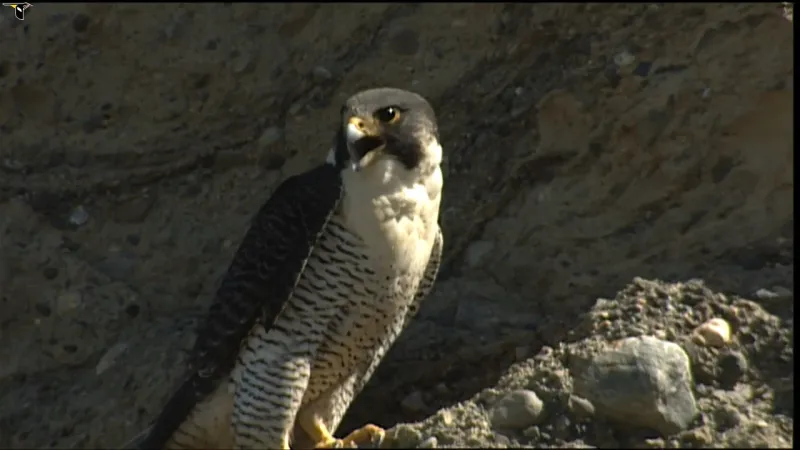
The vocalizations of hawks and falcons differ significantly, reflecting their communication needs and social structures. Hawks often emit loud, piercing screams used to communicate territory or during mating displays. Falcons, on the other hand, produce a variety of sounds, including a distinctive chattering used between mates. These vocal differences are crucial for their survival, aiding in territory defense and mate attraction. Understanding their calls offers a glimpse into their complex communication systems and social interactions, adding another layer to our appreciation of these fascinating birds.
Migration Patterns
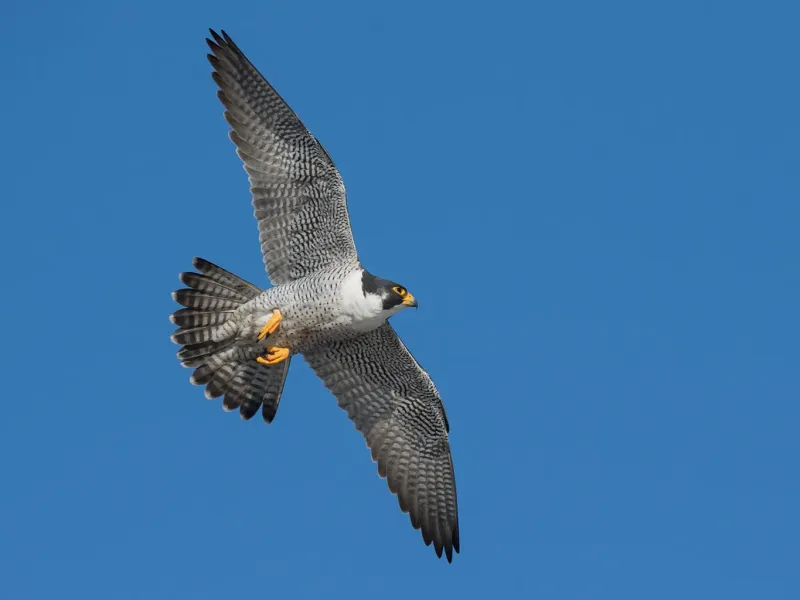
Migration is a common behavior among both hawks and falcons, though their patterns differ. Hawks often undertake long migrations over mountains and across continents, relying on thermal updrafts for energy-efficient travel. Falcons, in contrast, tend to follow coastal routes, capitalizing on strong winds for long-distance journeys. These migratory behaviors highlight their adaptability and resilience in facing environmental challenges. Understanding their migration patterns helps in conservation efforts and reveals the intricate balance of nature that supports these remarkable journeys.

